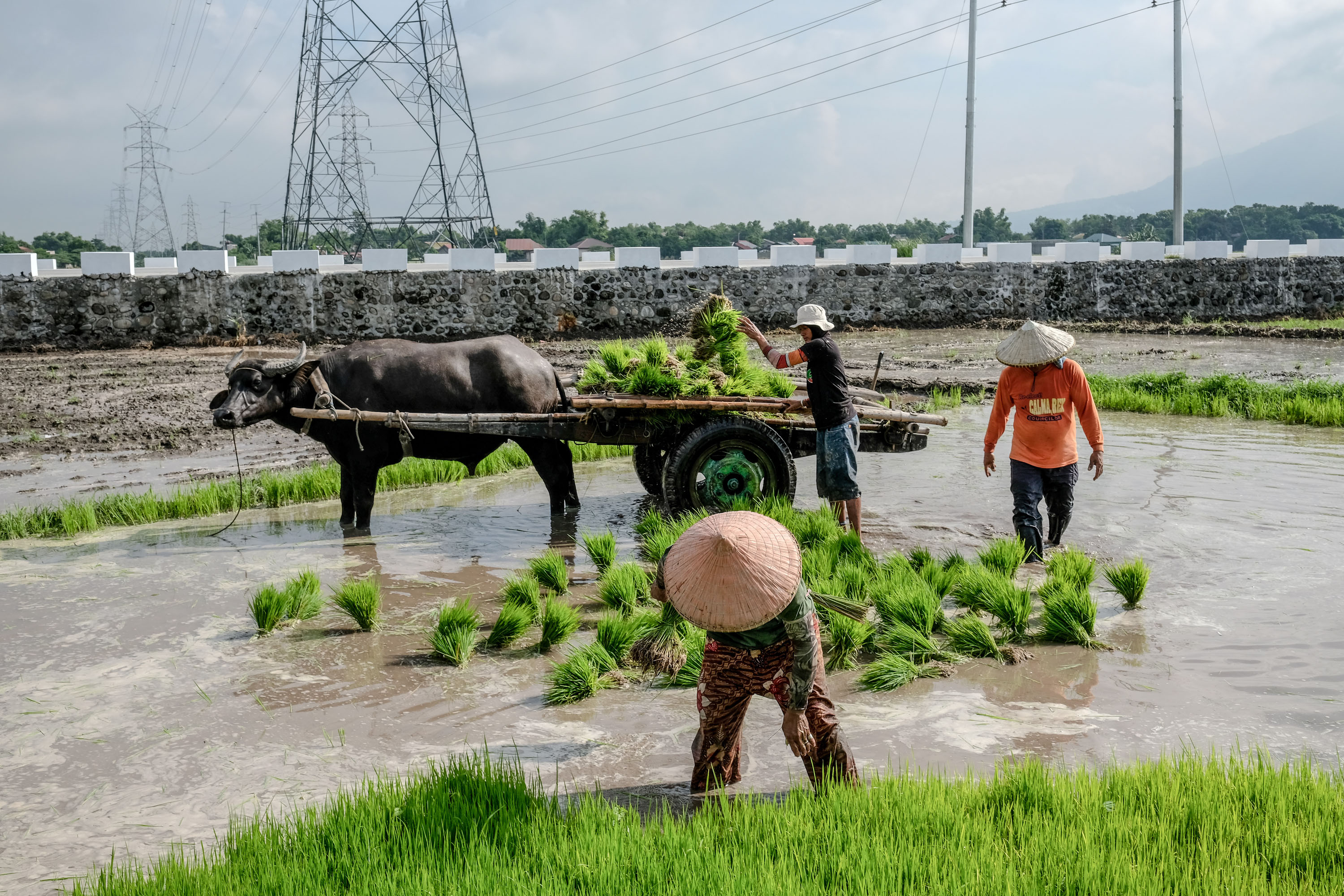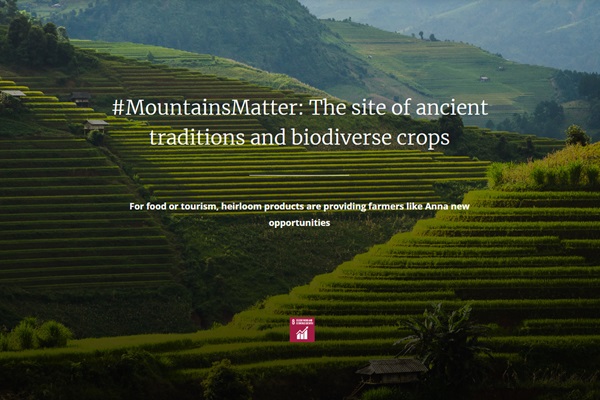 Philippines
Philippines

OCOP in RAP - Philippines
One village One Product (OVOP) or similar homegrown schemes :
Locally Important Agricultural Heritage Systems (LIAHS)
One Town One Product (OTOP)
Geographical Indications (GI) systems:
In progress
One village One Product (OVOP) or similar homegrown schemes
Scheme 1: Locally Important Agricultural Heritage Systems (LIAHS)
Year of establishment: 2019
No. of agri-products under the scheme: 3
Origin and location:
- Ifugao province: Traditional Rice Farming System in Hungduan municipality;
- Ifugao province: Hingyon Heirloom Rice Production in Hingyon municipality; and
- South Cotabato province: Lake Sebu T’nalak Production System in Lake Sebu municipality.
Classification:
For LIAHS recognition and confirmation, the criteria are:
- The system supports local food security and livelihoods;
- It hosts high biodiversity, including agro-biodiversity;
- It involves indigenous agro-ecological knowledge systems and practices;
- There is a wider socio-cultural system that supports the agro-ecological practices; and
- It lends to a remarkable landscape.
1. Hungduan Traditional Rice Farming System for Hungduan, Ifugao for Traditional rice
The Ifugao Rice Terraces including the Hungduan Rice Terraces have been a model of grandeur thousands of years ago. This provides a strong interaction of an ecosystem for a significant agricultural heritage system. FAO designated it in 2011 as a Globally Important Agricultural Heritage System (GIAHS). This designation was a result of the implementation of the Conservation and Adaptive Management of the GIAHS with support from the Global Environment Facility (GEF).
Beyond the production of rice, the communities have kept their distinct identities intact on the strength of unifying values such as nature, family and kinship, history, and a sense of belonging to their community. Moreover, indigenous knowledge, customs, and traditions have always been an integral part of the almost everyday life of the rice-based local community. Read more...
2. Hingyon Heirloom Rice Production for Hingyon, Ifugao: The Ifugao Rice Terraces were named as a World Heritage Site by the UNESCO World Heritage Center in 1995. It has passed UNESCO's standards due to the blending of the physical, socio-cultural, economic, religious, and political environment as a living cultural landscape (Terraces of the Philippine Cordilleras, Wikipedia).
Although Hingyon rice terraces were not included as sites of the pilot system of the FAO’s global project, Globally Important Agricultural Heritage System (GIAHS) in 2011, it however forms part of the Ifugao Rice Terraces as a whole.
As compared to the other rice terraces in Ifugao, Hingyon rice terraces is different in appearance considering the topographic and terrain of the place. Most of the rice terraces are built at the foot of mountains with very wide paddies. In the entire province, it is in Hingyon where you can find the widest rice paddies that were terraced. The rice terraces are not as steep as those in the other municipalities of Ifugao. Clustered residential houses are within the terraced areas.
All the rice terraces are planted with heirloom rice which is a special kind of indigenous rice that has been planted by the ancestors of Ifugao and other upland tribes. It is colored glutinous rice that possesses outstanding quality, aroma, texture, color (red, purple or violet), taste, and nutritional value.
3. Lake Sebu T’nalak Production System for Lake Sebu, South Cotabato: The abaca weavers of the T’boli, one of the tribes in Mindanao, are known as the dreamweavers because of their belief that the inspiration for the patterns of their signature T’nalak fabric comes to them in their dreams. The lush landscape of Lake Sebu, which the T’boli call home, certainly seems to inspire dreams, with its picturesque mountains and lush forests. The beautiful surroundings, coupled by the unique handicrafts and the rich traditions preserved by the tribes in the municipality, regularly draw tourists to the town, which is considered the summer capital of the province of South Cotabato.
Contact
Bureau of Agricultural Research (BAR),
Department of Agriculture,
Government of the Philippines.
Scheme 2 One Town One Product (OTOP)
Year of establishment: 2004
Products under the scheme: OTOP covers tangible products and skills-based services (not covering experiences, tourism activities and festivals) in 5 categories:
- Processed Food : processed fruits and nuts, delicacies and ‘kakanins’. juices and beverage, pastries and bakery goods, preserved food, sauces, cakes and desserts, wine, tea, food supplements, culinary-based specialty products;
- Agri-based Products: coffee, cacao, agricultural produce, agri-processing (processed meats, coconut oil, etc), seafood (preserved and processed);
- Arts and Crafts : coco coir, weaves, bamboo, paper artistry, wood;
- Home & Fashion/ Creative Artisanal : gifts, souvenir items, furniture, décor, houseware, fabrics, garments, toys, textiles; and
- Services (skills-based) and Others: hilot, sculpting, wellness products (essential oils, etc), industrial products, personal care (soaps, etc), cosmetics.
Origin and location: national wide, implemented at the barangay level
Classification:
Leveraging on “Pride of Place”, cultural value and market-responsiveness, OTOP products are identified based primarily on the following:
(1) cultural value – heritage, local customs, living traditions, or a vintage recipe passed on from generations;
(2) abundant resources or skills – available raw materials and a pool of skills readily deployable in the locality or proximate ones;
(3) competitive advantage – a locality's innate or endemic strength anchored on several variables like topography, climate, geographic location, among others.
MSMEs who engage in business within the value chain of OTOP products (raw material suppliers, processing, distributor, retailer, but mostly the manufacturers, etc.) are called "OTOPreneurs".
Sample products:
- Traditional rice: Hunduan municipality, Ifugao province.
- Heirloom rice: Tinawon village, Hingyon municipality, Ifugao province.
- Tnalak cloth: Lake Sebu municipality, South Cotabato province.
National website:
https://www.dti.gov.ph/negosyo/otop-ph/
Facebook: https://www.facebook.com/OTOPPhilippines/
Instagram: https://www.instagram.com/otop.philippines/
Contact
Regional Operations Group,
Department of Trade and Industry, under the leadership of Undersecretary Blesila A. Lantayona
Geographical Indications systems
In the Philippines, GI is enumerated as an intellectual property right under the IP Code of 1997. Currently, the Philippines is working on a draft Rules and Regulations on Geographical Indications.
Although there are no GI products yet registered, the Philippines has already made efforts to identify potential GI products: Lake Sebu T'nalak, Guimaras Mango, Davao Pummelo, Bicol Pili Nut, Barako Coffee, Bonoan Bangus, Aklan Piña Cloth, Lumban Embroidered Products, Cebu Dried Mango, Cordillera Heirloom Rice, Kalinga Coffee, Bagtason Loom of Antique, Yakan Cloth of Zamboanga and Basilan, Sabutan Weave of Aurora, Lanzones of Camiguin, Cacao of Davao, and Basey Banig of Samar. Through an FAO Project in partnership with the Department of Agriculture, two pilot products have also been identified as potential GI products: Cordillera Heirloom Rice and Kulaman Coffee.
Contact
Ms. Amparo C. Ampil
Policy Research Service,
Department of Agriculture
Atty. Jesus Antonio Z. Ros
Bureau of Trademarks
Intellectual Property Office of the Philippines
Highlights

#MountainsMatter: The site of ancient traditions and biodiverse
03/10/2022
In the north of the Philippines, the Ifugao rice terraces decorate the sides of the Cordilleras mountains. These magnificent terraces were created by...
